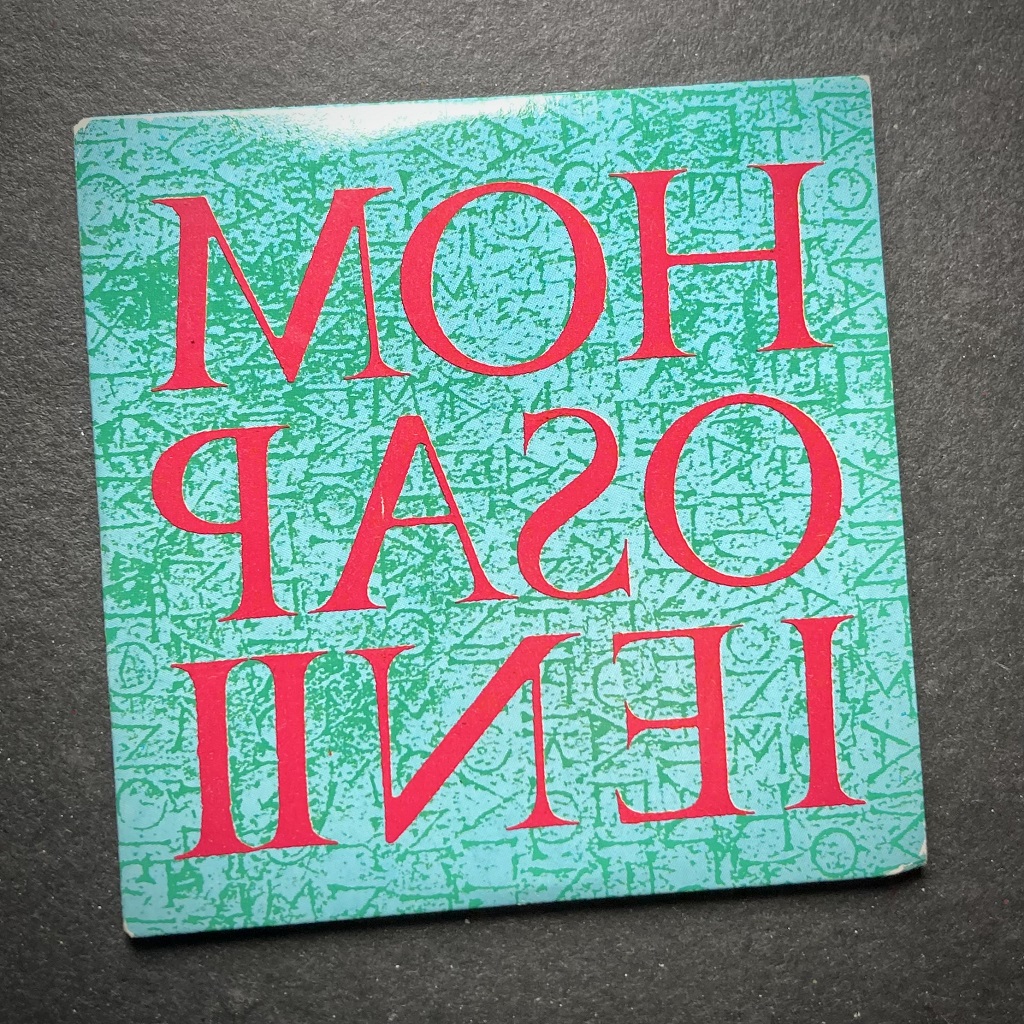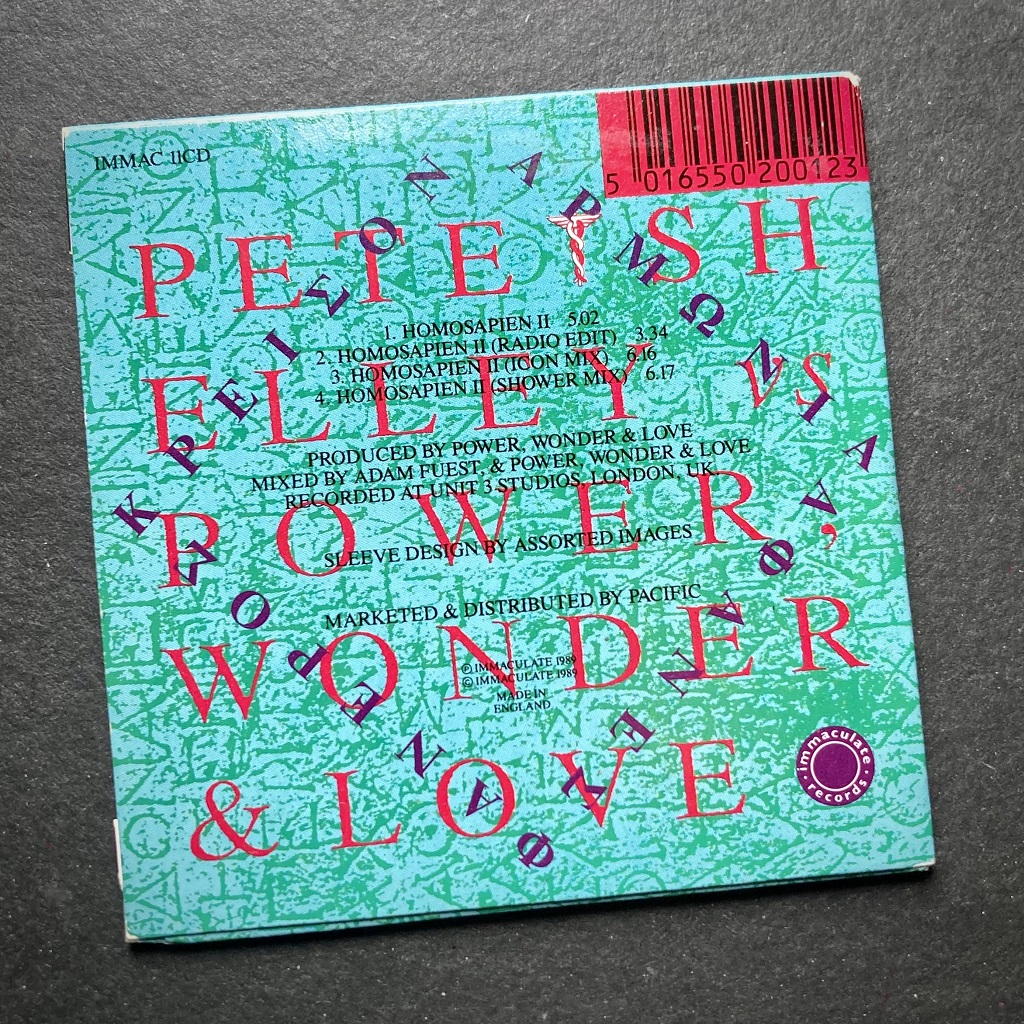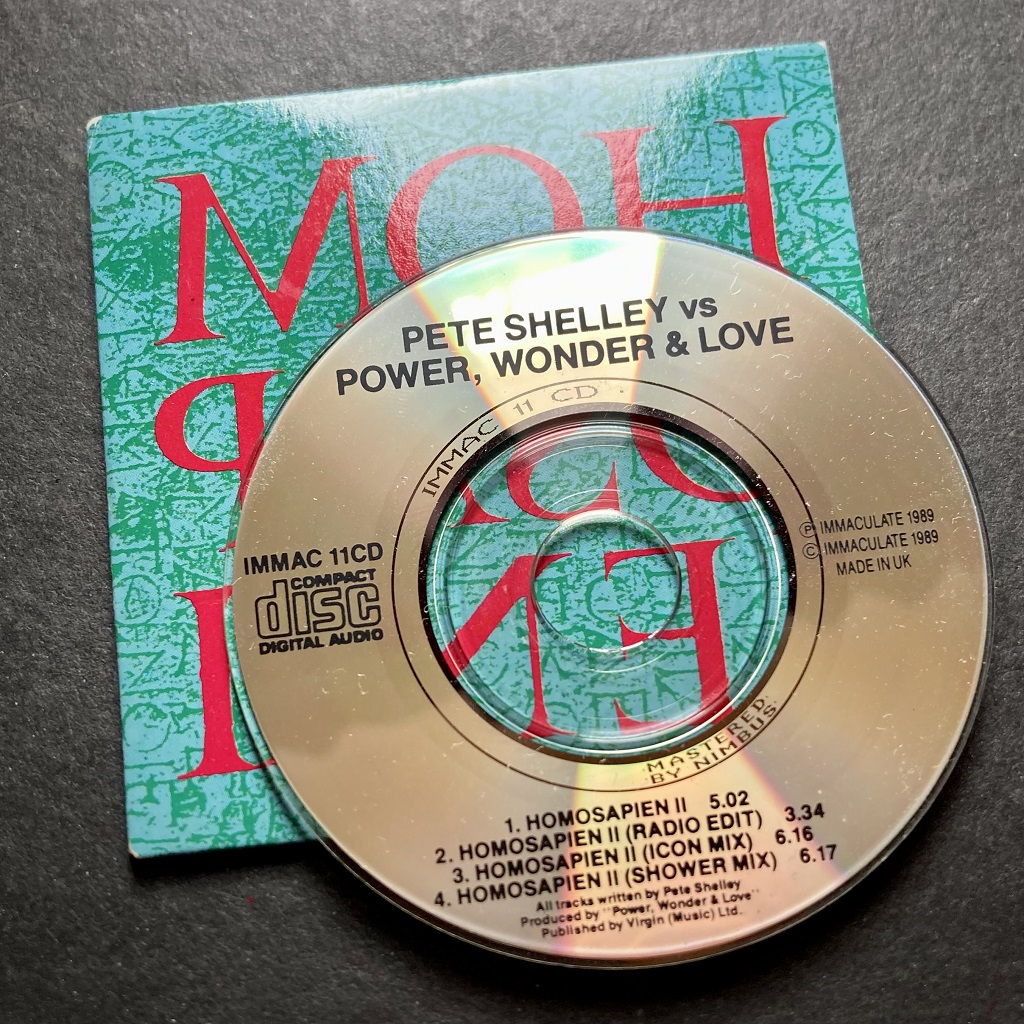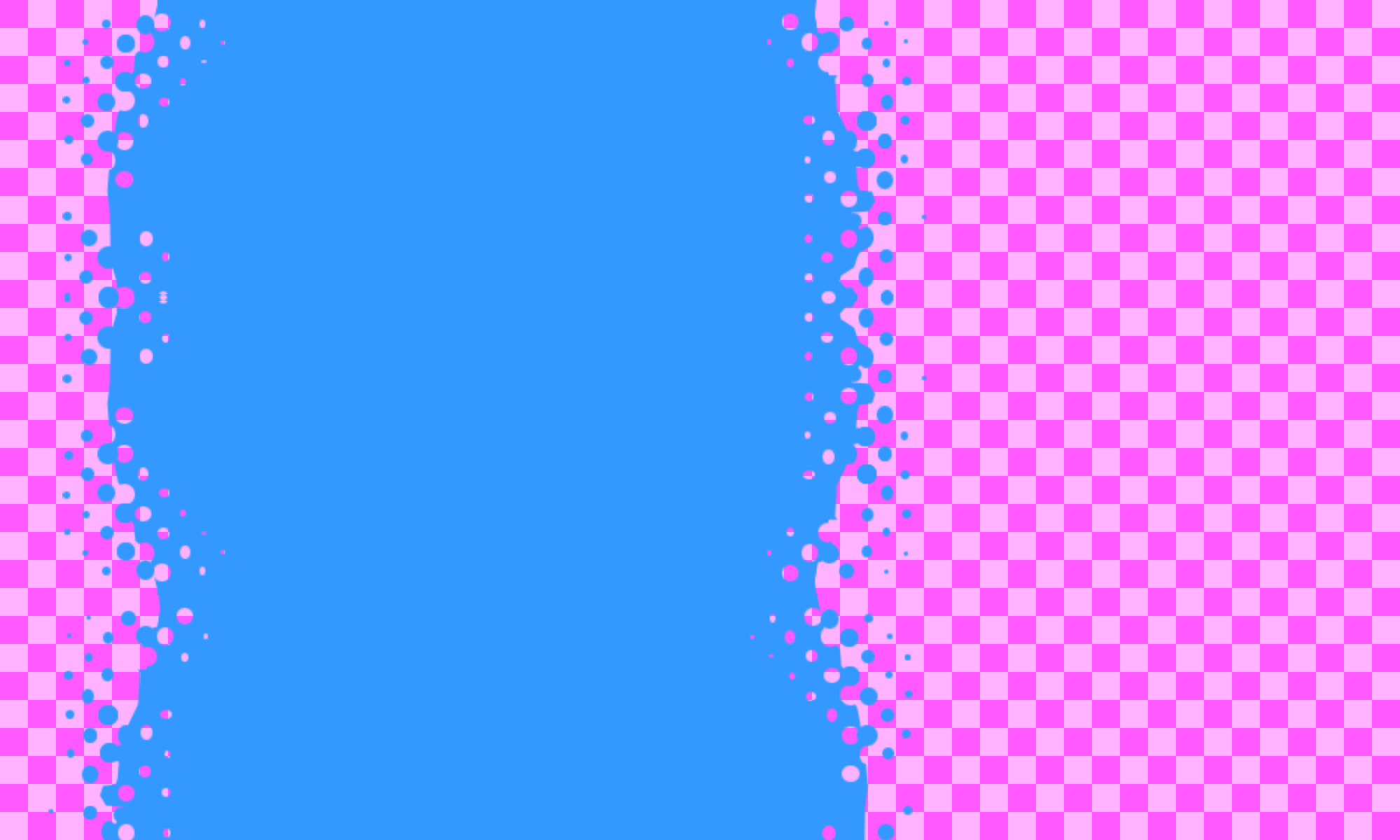2025 has been a good year for remembering the wonderful Pete Shelley, by way of various re-releases, firstly, the Record Store Day exclusive of the ‘Yesterday Is Not Here (Radio Sessions 1979 – 1983)’ album (which includes the first, acoustic guitar and vocal rendition of the song that is the subject of this post, in the form of ‘Homosapiens’), then new re-releases of Pete’s ‘Homosapien’ and ‘XL-1’ albums. But, what do we have here? Not one of these new releases, no – quite a curio in fact and one that passed me by back in the day.

‘Homosapien II’ is a 1989 period, re-recorded, precision re-tooled house/techno-flavoured update of 1981’s anthemic ‘Homosapien’. Presented here in various mixes is an immaculately tailored, enthusiastically programmed four-to-the-floor electronic reconstruction that has its eye firmly on the dancefloor, in sharp contrast to the somewhat more delicately primitive synthesiser and acoustic guitar construct of the original. It’s certainly a lot busier and somewhat more dramatic of an arrangement this time out.

Tracklist
- ‘Homosapien II’ (5’02”)
- ‘Homosapien II’ (Radio Edit) (3’34”)
- ‘Homosapien II’ (Icon Mix) (6’16”)
- ‘Homosapien II’ (Shower Mix) (6’17”)
I only have the 3” CD single release, which features four mixes. There is also 7” and 12” versions out there too, that I don’t have, and the 12” version contains a mix not on the CD, the 6’08” ‘Techno Mix’ on its B side. Of the mixes to be found on the CD, variation is minimal between them, to my ears at least, and the last of them (the ‘Shower Mix’) is a wholly instrumental take.

There’s precious little info about this release that I have come across. But, Power, Wonder & Love appear to have been the name under which brothers, Alexis & George Atkins worked and they crafted and produced the music while Pete Shelley re-recorded the vocals, along with Adam Fuest aiding the production. While there’s no direct credit for Martin Rushent, who produced the original, the release is on his Immaculate label.
Some might listen to this and feel that you could almost carbon-date the sound and production chops nailing it to the fashions of the year, or find the singular focus on the dance-floor disrespectful to the primitive, anthemic electro charm of the original – which, it must be said, could pack an alternative club night dance-floor good and proper on its own. But, I think this update acquits itself well and sits alongside the original rather than trying to replace it. The rather precisely programmed, almost militaristic rhythm box snare drum and handclap happy feel, very much of its time, is certainly in sharp contrast to the minimal electronic whipcrack of the original. But it has life and in some ways, it’s two years ahead of what Kraftwerk brought to the table with 1991’s ‘The Mix’, which has a clearly similar feel to its re-fashioning.


Nice review — I just recently picked this up with an OMD 3″ of Dreaming. The nice thing is the 3 other mixes are also listenable and not skipped. Also nice that my PC’s DVD and Blu Ray drives can both play them with inserts!